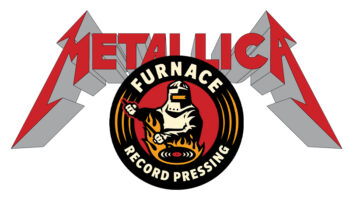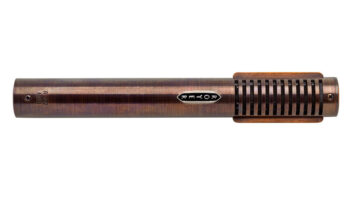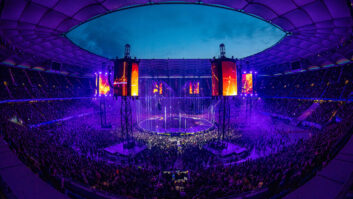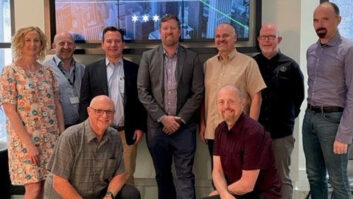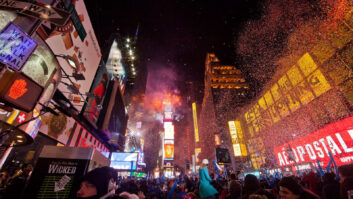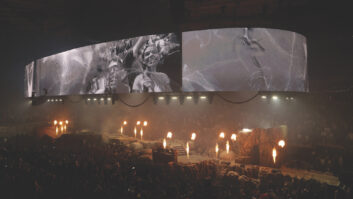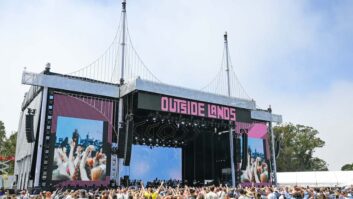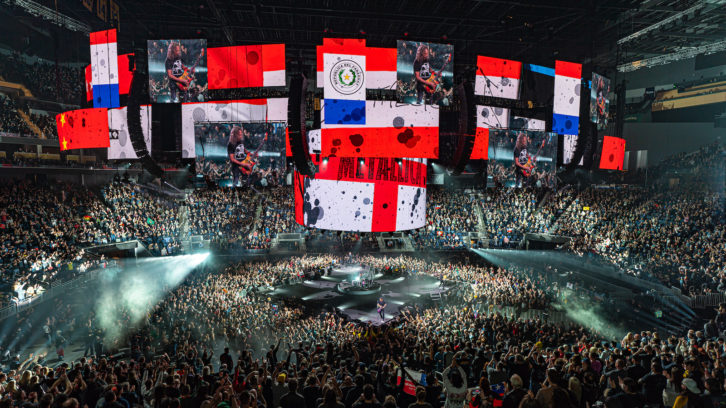
San Francisco, CA (January 25, 2022)—2021 was many things to many people, but for the members of Metallica, it was time to celebrate. James Hetfield and Lars Ulrich founded the band in 1981, and four decades, nine Grammy Awards and 120 million albums later, the group marked its 40th anniversary in December, with a week-long series of Bay Area events dubbed the San Francisco Takeover, leading up to a pair of concerts for fan club members only at the city’s Chase Center arena.
Playing in the round, the group had audio services provided by Ultrasound (Petaluma, Calif.), which in turn fielded a massive, in-the-round audio system featuring 286 loudspeakers from another Bay Area company, Berkeley’s Meyer Sound. Due to the pandemic, the band’s longtime FOH engineer Big Mick Hughes was unable to come from the U.K. for the gigs, so they were mixed by Ozzy Osbourne’s own FOH legend, Greg Price.
Companies To Watch 2022
Playing in the round is a familiar setting for the band, having used that format for arena shows since the mid-1990s. “It’s a normal place for them to be; they’re very comfortable with it,” said Dan Braun, Metallica’s creative director and production designer. “A Metallica show is 50 percent band and 50 percent audience—the band generating energy and spilling that energy off the stage, and the audience taking it, amplifying it and sending it back. In-the-round works for them because when you watch the show, the backdrop isn’t outer space or a haunted house—it’s the audience on the other side of the arena. It’s not about a band standing in front of people and pontificating; it’s a collective, collaborative experience, and we try to create an environment where we allow people to enjoy that experience.”
Creating that experience involved the expansive use of video screens to display footage and imagery from throughout the band’s career. “The whole theme was to tell the story of the first 40 years of the greatest rock and roll band in the world,” said Braun. “I also wanted to tell how people came to find Metallica, so we tried to fill the show with things that would make members of the audience say, ‘I remember that—that was my first album or my first show; I remember that guitar, that drum kit from that tour.’ We wanted to make these shows unique to all the people in the audience and make them remember their personal journeys.”
Design work for the concerts began in April 2021, with Braun taking inspiration from sources as far afield as the architecture of Frank Gehry in order to create an organic whole to the staging: “I don’t believe a show is a video system and a lighting system and a sound system; I believe it’s one system, so everything is integrated.” That, in turn, had Braun and co-producer/ production manager John Zajonc collaborating with different departments, from lighting (Rob Koenig, director; Cat West, programmer) to video (Gene McAuliffe, director; Naoki Ogawa (assistant director) to staging (Chad Koehler, rigger; Dewey Evans, stage manager) to audio (Bob Cowan and Adam Correia, monitor engineers).
Classic Track: ‘Master of Puppets,’ Metallica
Creating the audio system design was Meyer Sound’s director of system optimization, Bob McCarthy, who hanged 10 main arrays among the video screens, with long throw arrays of mixed Leo and Lyon line array loudspeakers and short throws with Lyon only. The half-dozen inner downfill arrays used Leopard line array loudspeakers, except for two long-throws with three Lyons each. Low end was supplied by 40 1100-LFC lowfrequency control elements, with sub-bass handled by four-dozen VLFC very low frequency control elements.
Braun hailed McCarthy for his ability to continually rework the system as the production design evolved. “Meyer Sound and Ultrasound have just been unbelievable partners throughout this whole journey,” said Braun. “I have a lot of faith in the folks at Meyer Sound, and Bob McCarthy has been a remarkable partner in designing our sound reinforcement.”
Braun himself has worked with the group for 27 years, and while production tech has changed over time, the ethos behind a Metallica show has remained the same: “Whether it’s pyrotechnics, lasers, video or taking the sound system to the next level, for Metallica, it’s always been about delivering the best show to the audience. I’ve seen them sick. I’ve seen them married. I’ve seen them divorced. I’ve seen them having kids. I’ve seen them in all different environments. The only thing I’ve never seen is them phoning it in—and that is inspiring. If the guys on stage are willing to give it up, then we all should.”
